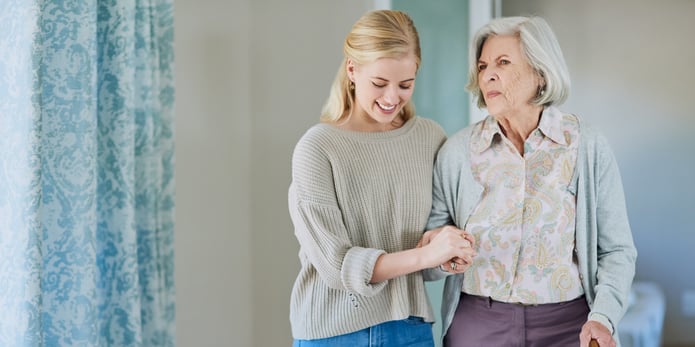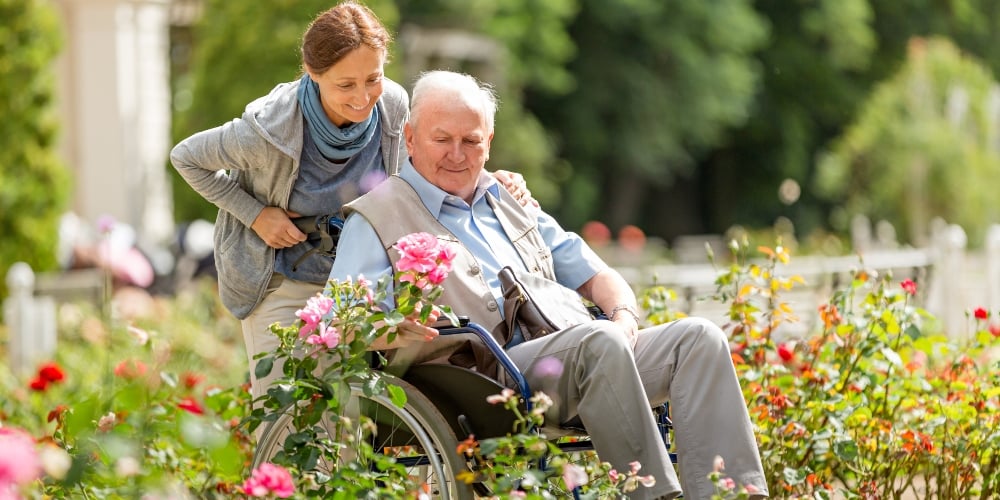
If you’re searching for ways to keep your aging loved one safe at home, you might be thinking about fall-proofing the home.
Although throw rugs and slippery bathroom floors can certainly cause some spills, people rarely fall for only one reason. Usually, there are several factors that contribute to a fall or to a person’s fall risk — and some of them might surprise you.
Some of them might surprise your loved one, too. It’s common for older adults, especially those who walk just fine or don’t have trouble with their balance, to think fall prevention doesn’t apply to them. But taking steps to minimize risks and prevent falls is what’s going to help your loved one stay independent.
Here’s a look at five fall facts family caregivers should know so they can help their loved ones stay safe, active, and independent longer.
1. Most Seniors Don’t Report Falls
About 36 million older adults fall each year, but fewer than half tell their doctor. Is it possible that your loved one has fallen and covered it up?
Some seniors hide accidents like these or downplay aches and pains. They might fear that you will try to get them to use a walker. Perhaps they don’t want to go to another doctor’s appointment. Maybe they just don’t want you and your siblings to worry about them.
These concerns are understandable — your parents want to be independent for as long as possible. But as a caregiver, you need to know about falls so you can help them to take actions that will reduce the chances of a bad fall.
Whether or not your parent has fallen, let them know that there is absolutely no shame in reporting a fall. Rather, there is much to gain by sharing this pertinent medical information with you and their health care team.
2. Fear of Falls Makes Falling More Likely
If your loved one has fallen before, it’s likely that they’re afraid of falling again. Even if they haven’t fallen, they’ve probably heard stories of someone who fell, broke their hip, and never recovered. To cope with the fear and anxiety, they might refuse to walk outside of the home unassisted or avoid leaving the home altogether.
The problem is that by limiting their activities and social engagements, they’re actually increasing their risk of falls: When a person is less active, they become weaker, which increases their chances of fall. Plus, the fear of falling and a general loss of confidence can contribute to depression, isolation, and feelings of helplessness. They become even weaker, which increases their chance of falling again. It’s a vicious cycle.
Whether or not your loved one has fallen, talk to them about the fear of falling. Instead of reinforcing the fear and making things worse in the long run, encourage them to make a fall prevention plan.
Step 1 should be improving strength and balance. Again, limiting activity won’t prevent falls. Doing strength and balance activities at least three times a week will help by making muscles stronger and joints more flexible.
3. Medications Are Among the Most Common Causes
The more medications your loved one is taking, the greater the chance that one or a combination of them will make a fall more likely to happen.
Medicines for depression, sleep problems, and high blood pressure are often the culprit, though some medicines for diabetes and heart conditions can also make you unsteady on your feet. Side effects such as drowsiness, dizziness, and low blood pressure can all contribute to a tumble.
The good news is that medications are often a fixable risk factor. The bad news is that busy doctors aren’t always monitoring medication lists for interactions and side effects that may lead to falls. That’s where you, as a family caregiver, come in.
If you’re concerned that you or your older relative might be on medications that are increasing their fall risk, talk with their doctor about stopping medications when possible, switching to safer alternatives, and reducing medications to the lowest effective dose.
4. There Are Signs It’s Time to See a Physical Therapist
There are some common signs that your loved one might benefit from physical therapy. For example, does your mom have to climb stairs while carrying a heavy laundry basket when normally she would be holding a railing? Does your dad feel wobbly after quickly going from lying down to sitting and from sitting to standing?
If your loved one is holding onto walls, furniture, or someone else when walking or if they appear to have difficulty walking or arising from a chair, consider making an appointment with a PT, who can help them improve their balance, strength, and gait through exercise. They might also suggest a cane or walker and provide guidance on how to use these assistive devices.
5. A Holistic Approach to Fall Prevention is Key
Just like falls and fall-related injuries can have physical, mental, and emotional costs, fall prevention requires addressing the body, mind, and spirit.
For example, if your loved one is sleepy, they are more likely to fall. In addition to talking about the importance of getting sleep, you can also help boost your loved one’s energy levels with aromatherapy. Using uplifting scents like orange, peppermint, lemon, and rosemary in the morning by diffusing the oils into the room or applying them directly to clothing or tissues can help increase energy levels.
Another example: Eating healthily helps decrease the risk of falls by supporting healthy muscle and bone strength. If your loved one skips meals or eats mostly convenience foods, encourage them to eat a more balanced diet. By incorporating good sources of vitamin D and calcium into their weekly meal plan — try salmon, egg yolks, green leafy vegetables, and whole grains — you can help lower their risk of falls.
For more tips for addressing fall risk factors and preventing falls, download our holistic Fall Prevention Checklist for Older Adults. You’ll learn about common causes and risk factors for falls, conventional and holistic strategies for preventing falls, and when is it no longer safe to live at home anywhere. By making some changes, many falls can be prevented and older adults can stay safe, active, and independent longer.





